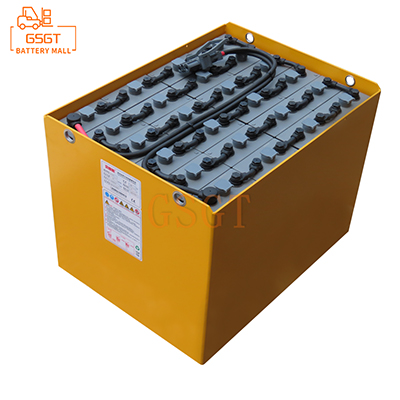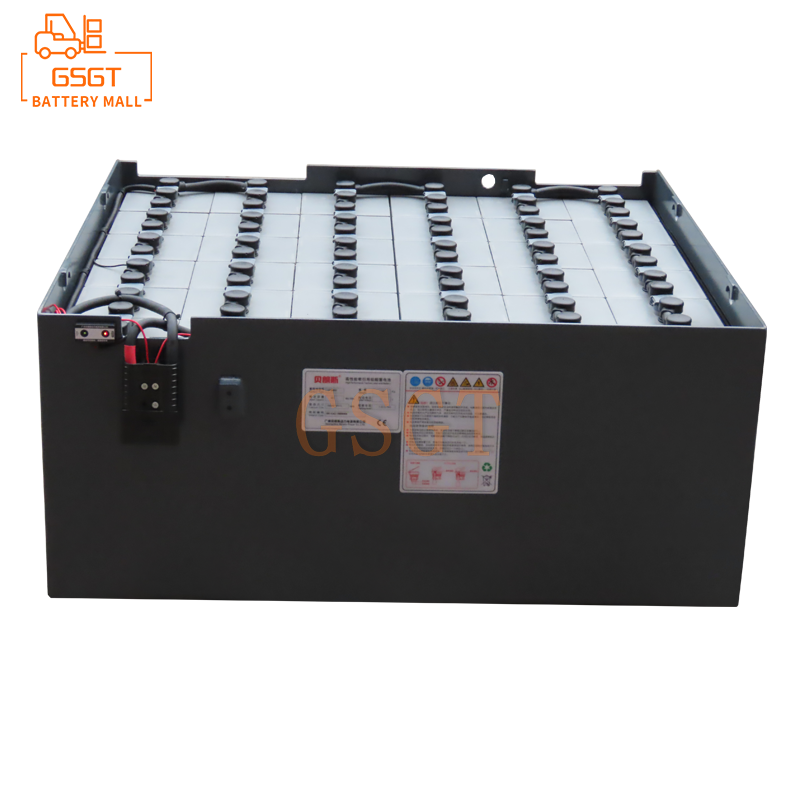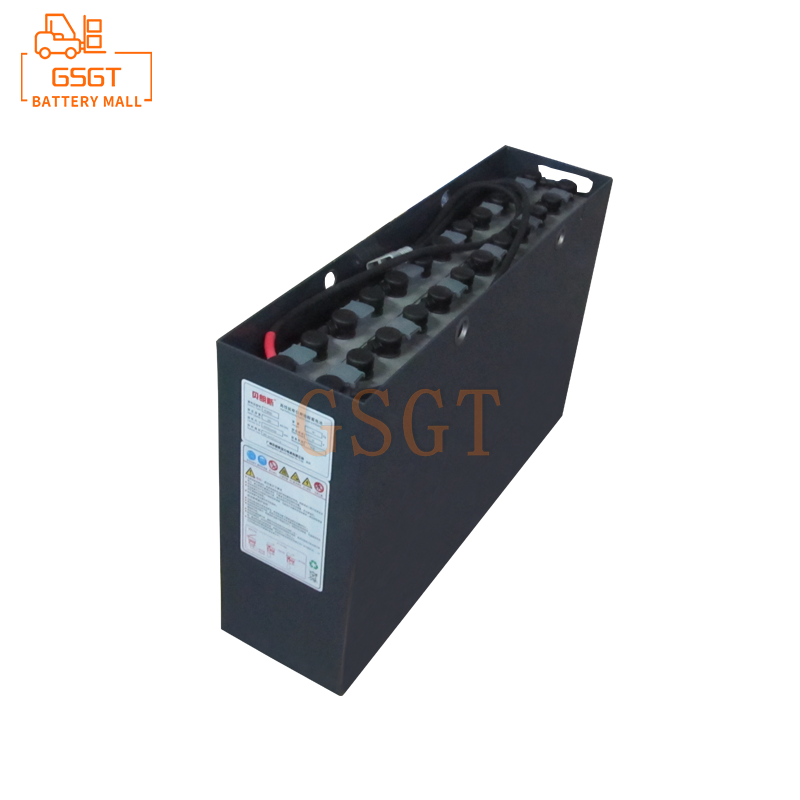Time:2025-04-29 10:33:33
Browse:621
Introduction
In the fields of modern logistics and industrial production, forklifts, as key material handling equipment, the stability and efficiency of their power supply are of vital importance. Lead-acid batteries have long held an important position in the power source of forklifts due to their advantages such as mature technology, low cost and high safety. However, with the continuous improvement of industrial automation and the increasingly strict requirements for environmental protection and efficient operation, the performance shortcomings of traditional lead-acid batteries have gradually become prominent, such as limited energy density, long charging time, and short cycle life, which have restricted the application of forklifts in high-intensity and long-duration operation scenarios. Against this backdrop, the emergence of new technologies has brought new opportunities for improving the performance of lead-acid batteries used in forklifts. Through innovative applications in multiple aspects such as materials, structures, manufacturing processes, and management systems, the new technology is dedicated to breaking through the performance bottlenecks of traditional lead-acid batteries, enabling them to better adapt to the development needs of modern industrial logistics and providing more reliable power support for the efficient and stable operation of forklifts. An in-depth exploration of these new technologies and the improvement paths for the performance of lead-acid batteries used in forklifts is of great practical significance for promoting the sustainable development of the industrial logistics industry.
The traditional limitations of lead-acid batteries for forklifts
The charging time is long.
The charging process of traditional lead-acid batteries is relatively slow. Under normal circumstances, the lead-acid battery of the forklift is charged from low power to full power by using the conventional charging method. Such a long charging time greatly limits the actual working time and efficiency of the forklift. In some busy logistics centers, forklifts may need to be charged multiple times during each shift, and each charge takes several hours, which significantly reduces the time that forklifts are actually used for material handling operations.
Limited cycle life
Cycle life refers to the number of charge and discharge cycles a battery can maintain a certain capacity under certain charge and discharge conditions. As the number of charge and discharge cycles increases, the plates inside the battery will gradually undergo corrosion, sulfidation and other phenomena, and the performance of the electrolyte will also gradually decline, resulting in continuous attenuation of battery capacity and ultimately failing to meet the normal usage requirements of forklifts. A shorter cycle life means that enterprises need to frequently replace batteries, which not only increases equipment maintenance costs but also causes production disruptions, affecting the normal production and operation of enterprises.
Plate material optimization technology
The application of new lead alloys: Traditional lead-acid battery plates mainly use lead-antimony alloys or lead-calcium alloys. Although lead-antimony alloy has good casting performance, during the charging and discharging process, antimony element is prone to dissolve from the plates and migrate to the negative plate, resulting in a decrease in the hydrogen evolution overpotential of the negative plate and an increase in hydrogen evolution. This not only causes water loss in the electrolyte but also accelerates the corrosion of the plates and shortens the battery life. The research and application of new types of lead alloys, such as lead-silver alloys and lead-calcium-tin-aluminum alloys, have effectively improved this situation. Lead-silver alloy has an extremely low hydrogen evolution overpotential, which can significantly reduce hydrogen evolution, lower the water loss rate of the electrolyte, and simultaneously enhance the corrosion resistance of the plates, thereby extending the battery's cycle life. Lead-calcium-tin-aluminum alloy integrates the advantages of multiple elements. It not only enhances the strength and hardness of the alloy, which is beneficial for the manufacturing and mechanical stability of the plates during use, but also reduces the resistance of the plates, improving the charging and discharging performance of the battery.
Electrolyte improvement technology
The use of new additives: Adding appropriate additives to the electrolyte is one of the important means to improve the performance of lead-acid batteries. Traditional electrolyte additives are mainly used to inhibit plate sulfation and reduce hydrogen evolution, etc., but the effect is limited. The research and development of new additives is moving towards multi-functionality and high efficiency. For instance, certain organic additives can form a protective film on the surface of the plates, inhibiting the dissolution and recrystallization of lead ions, thereby effectively preventing the occurrence of plate sulfation and extending the battery life. Meanwhile, some inorganic additives can enhance the electrical conductivity of the electrolyte, reduce the internal resistance of the battery, and improve the charging and discharging performance of the battery. There is another type of additive that has the function of adjusting the pH of the electrolyte, which can optimize the chemical reaction environment inside the battery and improve the overall performance of the battery.
Modular battery structure: The modular battery structure is to design the battery into multiple independent modules, each of which has relatively independent electrical and physical properties. This structural design has many advantages. First of all, the modular design makes the assembly and maintenance of batteries more convenient. When a certain module malfunctions, only the corresponding module needs to be replaced, without the need to disassemble and repair the entire battery, which greatly shortens the maintenance time and reduces the maintenance cost. Secondly, modular batteries can be flexibly combined according to the different power and endurance requirements of forklifts, enhancing the universality and adaptability of the batteries.
Application of intelligent management system
Adaptive charging control: The traditional charging method for lead-acid batteries often uses fixed charging currents and voltages. This charging method cannot be adjusted in real time according to the actual state of the battery, which easily leads to overcharging or undercharging of the battery and affects its lifespan. The adaptive charging control function of the intelligent management system can automatically adjust the charging current and voltage according to the real-time status of the battery, such as SOC, temperature and other parameters, to achieve the optimal charging of the battery. When the battery power is low, the system adopts a larger charging current to quickly recharge the battery and improve the charging efficiency. When the battery is nearly fully charged, the system automatically reduces the charging current to prevent overcharging. In addition, adaptive charging control can also adjust the charging parameters according to the ambient temperature, appropriately reducing the charging voltage in high-temperature environments to prevent the battery from overheating. Increase the charging voltage in a low-temperature environment to ensure that the battery can be charged normally. This intelligent charging control method not only shortens the charging time but also effectively extends the battery's cycle life, enhancing the reliability and stability of the battery during forklift operation.
The Development trends and Prospects of new technologies
The development trend of multi-technology integration
With the continuous advancement of technology, the performance improvement of lead-acid batteries used in forklifts in the future will show a development trend of multi-technology integration. The optimization technology of plate materials, the improvement technology of electrolyte, the innovation technology of battery structure and the application of intelligent management systems will no longer develop in isolation, but will be integrated and work in synergy with each other to jointly promote the overall improvement of the performance of lead-acid batteries. For example, the combination of the new type of plate material and the optimized electrolyte can further enhance the energy density and cycle life of the battery. The thin plate design, in combination with the intelligent management system, can achieve more efficient charging and discharging control and enhance the overall performance of the battery. Meanwhile, the innovation of battery structure will also provide better carriers and space for the application of other technologies. For instance, the modular battery structure facilitates the integration of more sensors and control modules, providing convenience for the functional expansion of intelligent management systems. This multi-technology integration development model will enable lead-acid batteries used in forklifts to achieve a qualitative leap in performance, better meeting the higher requirements for forklift power sources in the future industrial logistics field.
Develop in coordination with new energy technologies
Although new energy technologies such as lithium batteries and hydrogen fuel cells have developed rapidly in recent years and have been promoted in some forklift application scenarios, lead-acid batteries will still occupy a certain market share in the future due to their own advantages. In this case, lead-acid battery technology will develop in tandem with new energy technologies. On the one hand, lead-acid batteries can serve as auxiliary power sources or emergency power supplies, and be used in conjunction with new energy systems such as lithium batteries and hydrogen fuel cells to provide more reliable power support for forklifts. On the other hand, the development of lead-acid battery technology can also draw on some innovative achievements of new energy technology, such as in material research and development, manufacturing processes, etc. By absorbing the advanced concepts and methods of new energy technology, its own performance can be further enhanced. Through the coordinated development with new energy technologies, lead-acid batteries for forklifts will find a more suitable position in different application scenarios, achieve complementary advantages with new energy technologies, and jointly promote the diversified development of forklift power technologies.
The goal of continuously improving performance and reducing costs
In the future, the application of new technologies in the field of lead-acid batteries for forklifts will always revolve around the two core goals of continuously improving performance and reducing costs. In terms of performance improvement, we will constantly pursue higher energy density, longer cycle life, faster charging speed and more stable and reliable working performance. By developing new materials, optimizing battery structures and improving manufacturing processes, the performance bottlenecks of lead-acid batteries can be further broken through, enabling them to reach or approach the levels of new energy batteries such as lithium batteries in terms of driving range, charging and discharging efficiency, and service life. At the same time, in terms of cost reduction, measures such as large-scale production, optimizing production processes, and improving the utilization rate of raw materials will be taken to lower the application cost of new technologies, making lead-acid batteries adopting new technologies more competitive in terms of price. In addition, with the continuous improvement of battery recycling and utilization technology, the recycling value of lead-acid batteries will be further enhanced, which will also help reduce their overall usage cost. Only by achieving dual optimization of performance and cost can lead-acid batteries for forklifts maintain an edge in the fierce market competition and provide more powerful support for the sustainable development of the industrial logistics industry.
Conclusion
The continuous development and application of new technologies in aspects such as the optimization of plate materials, the improvement of electrolytes, the innovation of battery structures, and the application of intelligent management systems have brought remarkable results to the performance improvement of lead-acid batteries for forklifts. By adopting technologies such as new lead alloys, high specific energy cathode materials, new additives, colloidal electrolytes, thin plate designs, modular battery structures, and intelligent battery management systems, the problems of insufficient energy density, long charging time, and limited cycle life of traditional lead-acid batteries have been effectively solved, thereby enhancing the driving range, charging and discharging efficiency, and reliability of forklifts. The maintenance cost has been reduced. From the perspective of practical application cases, these new technologies have been verified in logistics enterprises, factories and other places, achieving good economic and social benefits. Looking ahead, the integrated development of multiple technologies, the coordinated development with new energy technologies, and the continuous improvement of performance and reduction of costs will become the important development trends of new technologies in the field of lead-acid batteries for forklifts. With the continuous innovation and improvement of new technologies, lead-acid batteries for forklifts are expected to achieve greater breakthroughs in performance and be more competitive in cost, thus continuing to play an important role in the future industrial logistics field and providing a solid power guarantee for the efficient and green development of the industry.

$3405

$4045

$2140

$1060

MESSAGE
Professional And Efficient
Security
Affordable Price
Professional Services